■Previous GM Sound Source Series
GM Sound Source 01: Ancient GM Sound Sources
GM Sound Source 02: Piano Category
GM Sound Source 03: Chromatic Percussion Category
GM Sound Source 04: Organ Category
GM Sound Source 05: Guitar Category
GM Sound Source 06: Bass Category
GM Sound Source 07: Orchestra Category
GM Sound Source 08: Ensemble Category
GM Sound Source 09: Brass Category
GM Sound Source 10: Reed Category
GM Sound Source 11: Pipe Category
GM Sound Source 12: Synth Lead Category
GM Sound Source 13: Synth Pad Category
GM Sound Source 14: Synth SFX Category
GM Sound Source 15: Ethnic Category
GM Sound Source 16: Percussive Category
GM Sound Source 17: SFX Category
In this drum set category, we will only deal with bass drum, snare, hi-hat, cymbals, and toms, which are the backbone of the drum set. I will introduce other percussion instruments next time.
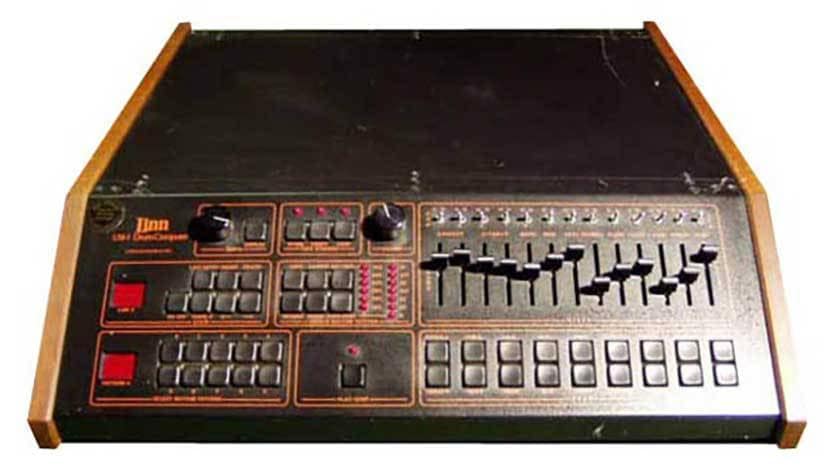
Linn LM-1 Drum Computer, Public domain (Source: Wikipedia)
Sampled drum sounds have a long history and are highly compatible with sampling. One of the earliest drum machines to use sampling was the Linn Drum LM-1 that was released in 1980. It records real drums, writes them into the machine's memory, and plays them back. Percussion instruments are relatively easy to make because once a sound is made, it basically just decays. Because there were no realistic sounding drum machines available at the time, the Linn Drum would soon be used in popular songs around the world.
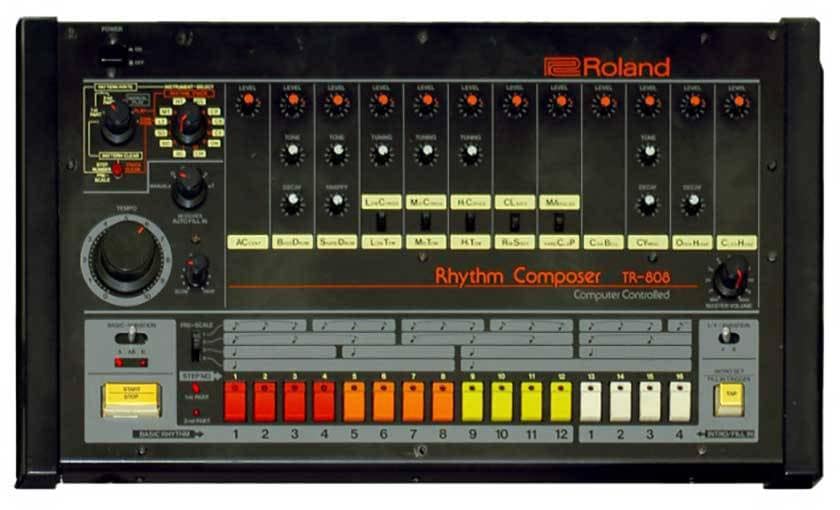
Roland TR-808, CC BY-SA 2.0 (Source: Wikipedia)
There are also drum instruments that use speech synthesis technology: the Roland TR-808 that was released in 1980 and uses analog synthesizer technology. It’s also in this category as Analog, and its sound is in a different direction from real drums. It did not sell well when it was first released, but once it was used in hit songs, it became a familiar sound to the general public and it has now become the standard.
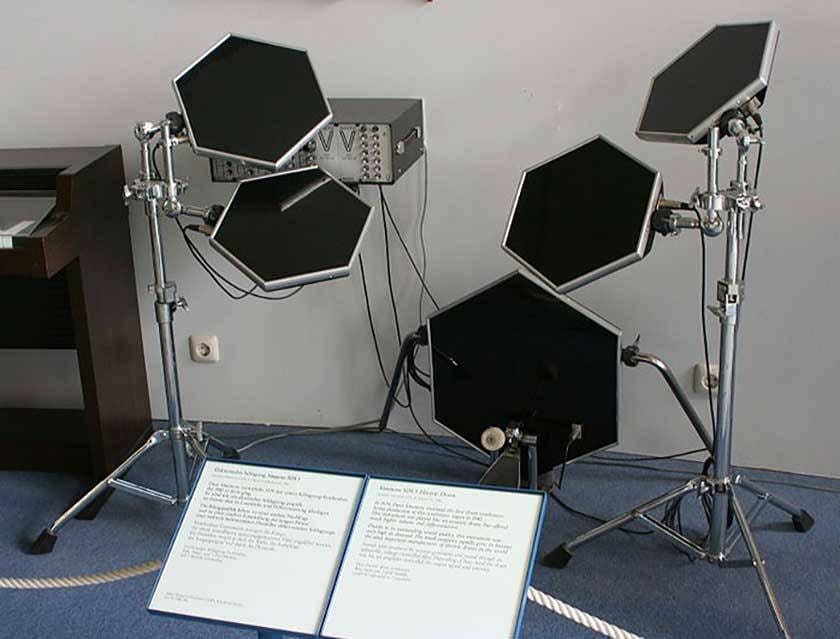
Simmons SDS5 Electric Drum, CC BY-SA 2.5 (Source: Wikipedia)
Electric is another drum set that uses analog synthesizers. It is probably inspired by the sound of the Simmons SDS5. It sounds like a synth drum, and it was often used in the 1980s. At that time, many drummers incorporated it into their acoustic drum sets.
Today's drum sounds are still mostly sampled, although some attempts are being made to use physical modeling. In that sense, drum instruments have not changed much over the past 40 years. The TTS-1 and other GM drum sound sources are about 20 years old, so they are very simple sampling types that are similar to Linn Drum. In terms of expressiveness, it has its limitations, but since it contains well-crafted sounds, it’s not bad in terms of usability, and depending on the application, it’s still worth using even today.
Arrangement of the drum set on keyboard
The placement of each tone is shown below; it’s useful to remember the GM placement as it is also the standard in the current mainstream drum sound sources. In particular, the positions of the bass drum, snare, and hi-hat are often listed in that order.
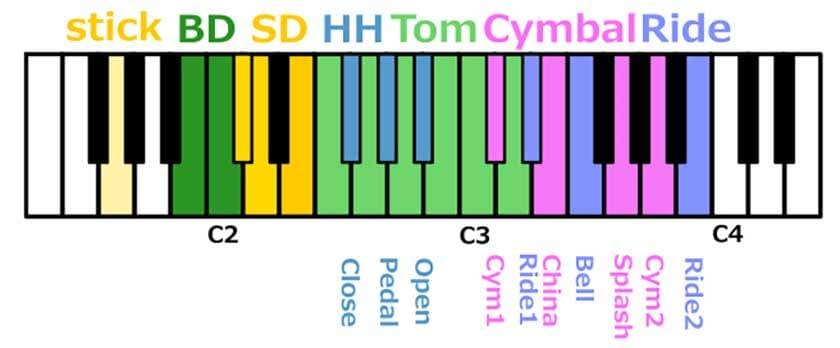
Since TTS does not have a picture of the drum set, I will use a screen shot of Slate Digital's SSD5 drum sound source, which has the same drum set configuration.
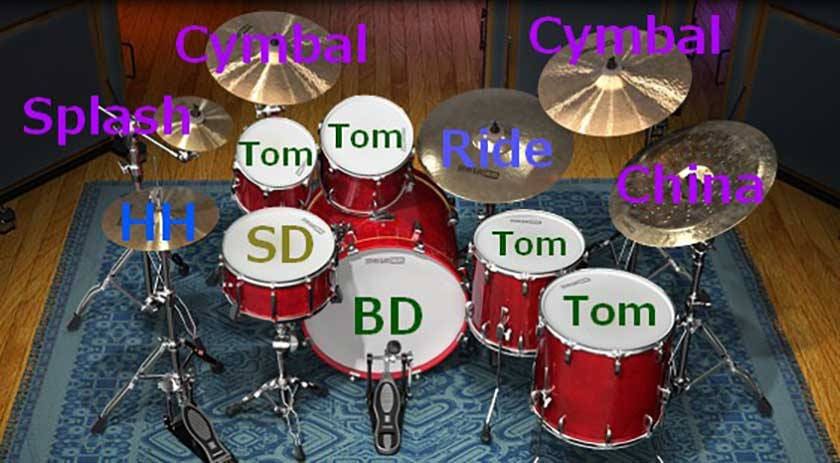
Drum Sets
There are eight different drum sets for the TTS-1, but not all of the sets are different from each other, and there are quite a few tones that overlap. Most of the sets are identical except for the snare, bass drum, and toms. In the orchestra, the timpani occupies one octave, so the position of the tones is very different from the others. In the video, each set is played in order. The orchestra is a very different set, so it is played in a different pattern.
- Standard
- Room
- Power
- Electric(Simmons)
- Analog(Roland TR-808)
- Jazz
- Brush(タムもブラシ専用)
- Orchestra)
G1 Sticks (common)
The sound of sticks hitting each other and they’re often used for counting.

Bass Drum (BD)
The “Kick” drums have the same basic structure as the big orchestral drums, but in popular music, they are adjusted to shorten the reverberation in order to beat. They vary in size from 18 to 26 inches, but the most commonly used sizes are 20 to 22 inches. In addition, the drum set handles the bass drum with the feet, so it is often referred to as a kick.
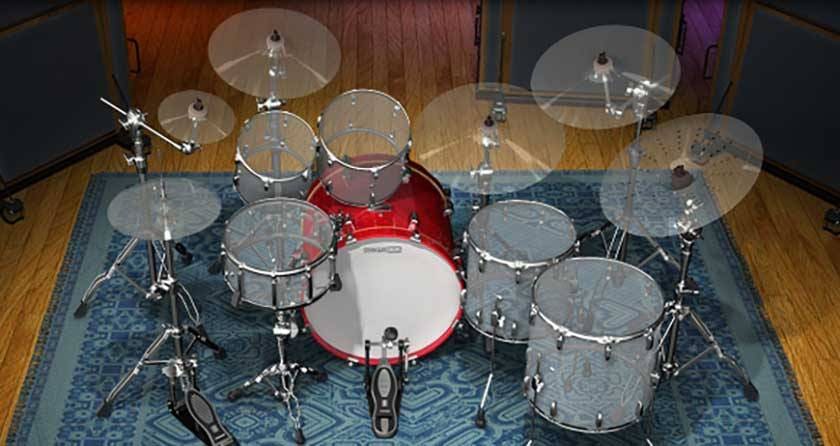
B1 Kick Drum 2(Standard、Power、Electric、Analog common)
C2 Kick Drum 1(Standard)
B1 Room Kick 2(Room)
C2 Room Kick 1(Room)
C2 Power Kick(Power)
C2 Elec.Kick 1(Electric)
B1 Jazz Kick 2(Jazz、Brush common)
C2 Jazz Kick 1(Jazz、Brush common)
B1 Concert BD 2(Orchestra)
C2 Concert BD 1(Orchestra)
Snare (SD)
The snare drum is the face of the drum set. Since it’s easily heard the most, its sound color and pitch are important. Its sound even influences the impression of a song, so there are many variations of its character in the GM sound source. In the case of TTS, the pitch can be adjusted by ±4 octaves with the COARSE TUNE and by ± semitones with the FINE TUNE, so it should be used aggressively. A real snare has many variations in terms of technique, but it’s difficult to cover them all in the GM sound source, so there are only hits that strike the head normally, rim shots that strike the head and rim at the same time, and side sticks that strike only the rim.
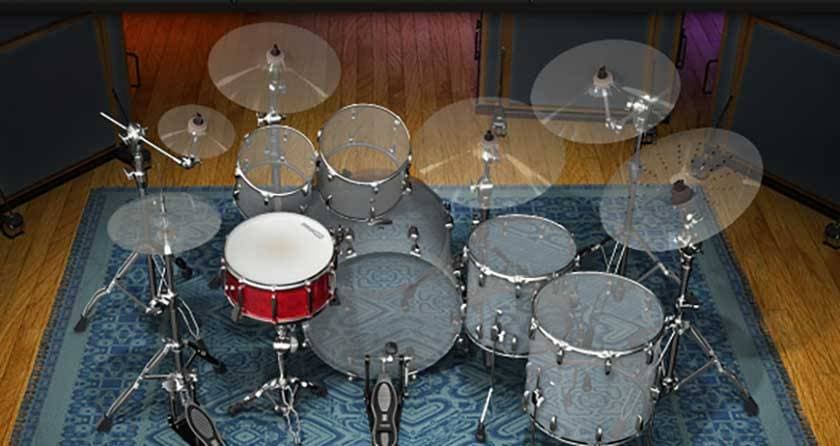
C#2 Side Stick(Common Except Analog)
C#2 Ana.Rim Sho(Analog)
D2 Aco.Snare(Standard)
E2 Elec.Snare(Standard、Room、Power、Analog、Jazz common)
D2 Room Snare(Room)
D2 Power Snare(Power)
D2 E.SnareDrum1(Electric)
E2 E.SnareDrum2(Electric)
D2 Ana.Snare 1(Analog)
D2 Jazz Snare(Jazz)
D2 Brush Tap(Brush)
D#2 Brush Slap(Brush)
E2 Brush Swirl(Brush)
D2,E2 Concert SD(Orchestra)
Hi-hat (HH)
The hi-hat is an essential part of the rhythm. It is often struck in small increments and has an audible sound that’s like white noise. It’s also structured to be like a combination of two 13- to 15-inch cymbals, but it’s the most troublesome part of a drum sound source because of the variety of techniques that exist for its use. Recent drum sound sources have a huge capacity to cover hi-hat sound variations. Also, although physical modeling and other techniques have become popular in recent years, it’s difficult to reproduce the sound of hi-hats and other hardware-based sounds because it’s still in its infancy.
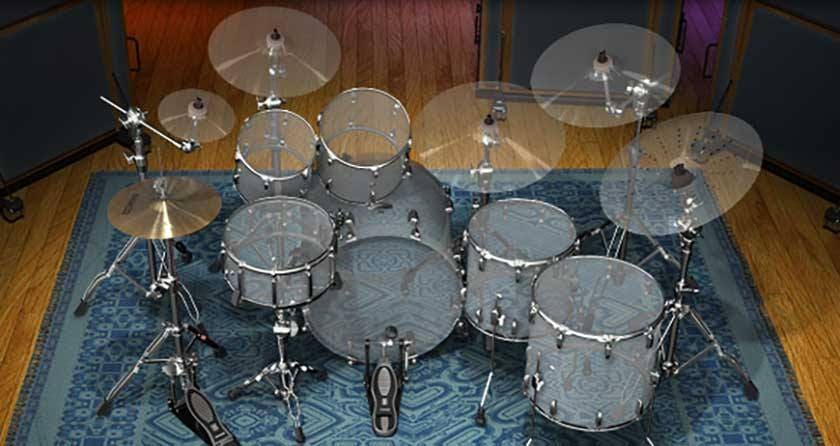
Standard、Room、Power、Electric、Orchestra common
F#2 ClosedHi-hat(Orchestra only Eb1)
G#2 Pedal Hi-hat(Orchestra only E1)
Bb2 Open Hi-hat(Orchestra only F1)
Analog Roland RC-808 sound
F#2 ClosedHi-hat
G#2 Pedal Hi-hat
Bb2 Open Hi-hat
Jazz Clear grained sound
F#2 ClosedHi-hat
G#2 Pedal Hi-hat
Bb2 Open Hi-hat
Attack is softer than Brush Jazz
F#2 ClosedHi-hat
G#2 Pedal Hi-hat
Bb2 Open Hi-hat
Toms (common to all arrangements except Orchestra) F2 G2 A2 B2 C3 D3
Toms are rarely played all the time, and they are often used as accents for fill-ins. The GM sound source allows for the use of 6 toms, which is a rather large drum set. The number of toms is a matter of preference for the drummer. If the number of toms is low, one or none may be used, and two is also on the low side. 3-4 toms is probably standard. Three or four is standard. More than that seems too cheesy. Some toms have skins on both the front and back sides, while others only have skins on the front side. The tuning of each side will also affect the sound.
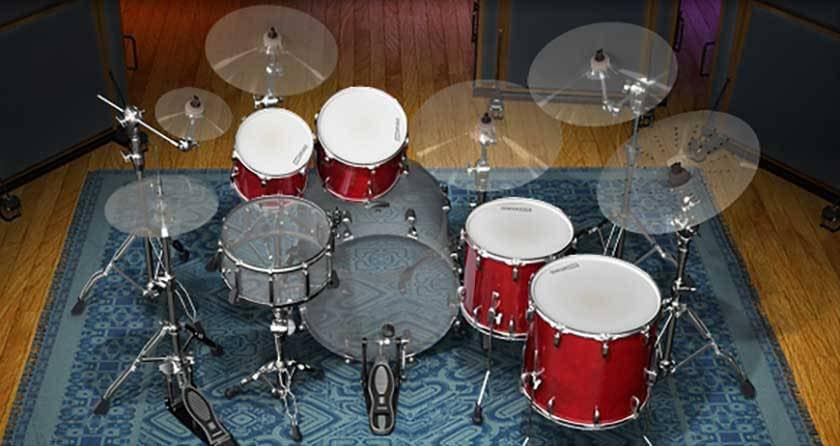
Tom(Standard、Jazz)
Room Tom(Room)
Power Tom(Power)
E.Tom(Electric)
Ana.Tom(Analog)
Brush Tom(Brush)
Timpani(Orchestra) F2~F3
Timpani is included in the orchestra category, but it can also be found in drum sets. The sound is exactly the same.
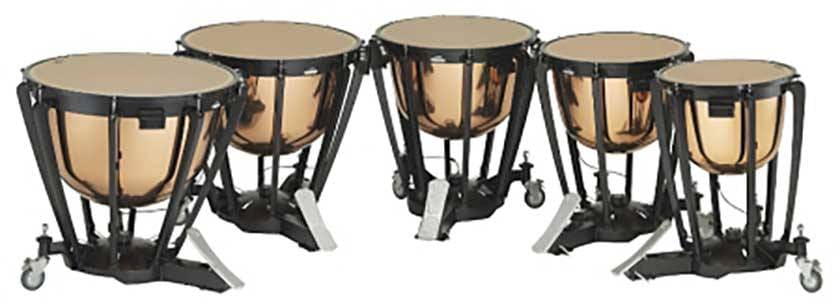
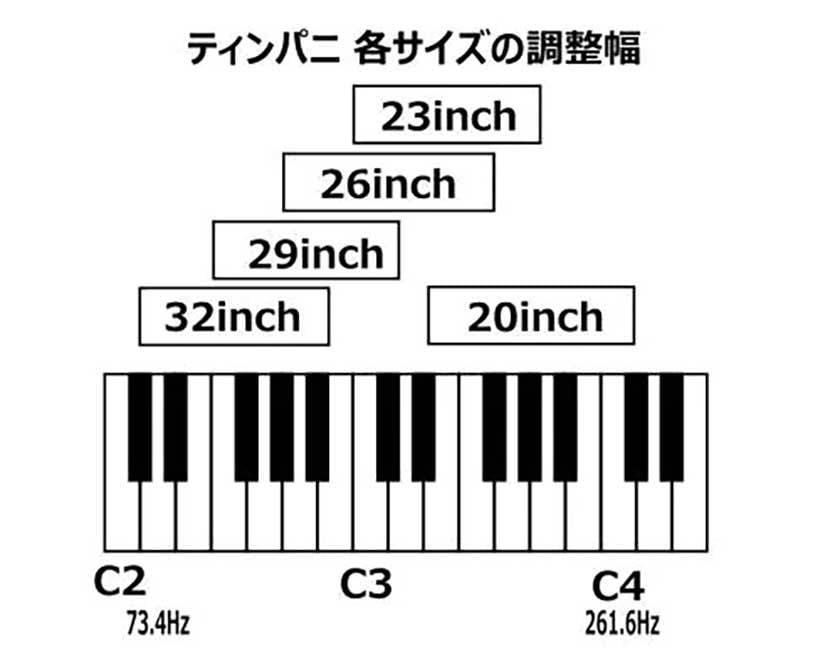
Cymbals (common)
Western cymbals originated in Turkey, where Zildjian still reigns as the top brand. The name “Zildjian” also means “cymbal maker” in Armenian, a title given by the emperor in the 1620s, which is telling of its long history. Historically, cymbals were among the instruments played by military bands during the Ottoman (Turkish) invasion of Europe in the 17th century, and in the 18th century, Turkish-style marches were composed by Mozart and other famous composers.
Crash Cymbals
The term “cymbal” generally refers to the crash cymbal, which is 14 to 18 inches in diameter. Every drum set includes at least one crash cymbal. They have a loud sound with a long, lingering finish, but they are surprisingly acoustically well-made.
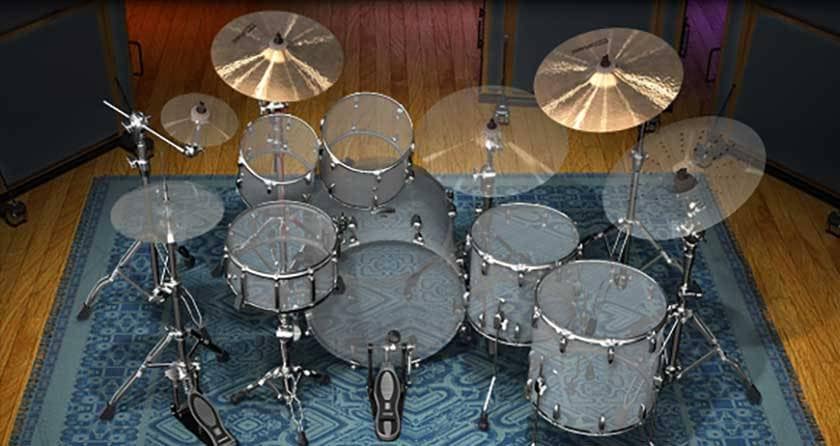
C#3 Crash Cymbal1
Relatively soft attack, can be used for cymbal roll technique, etc.
A3 Crash Cymbal2
A3 Crash Cymbal2 is used for accents and has a sharp attack.
Splash Cymbal (common)
Small cymbals ranging in size from 6 to 12 inches. It has a short reverberation and is useful when you want to add cymbals in a subdued manner.
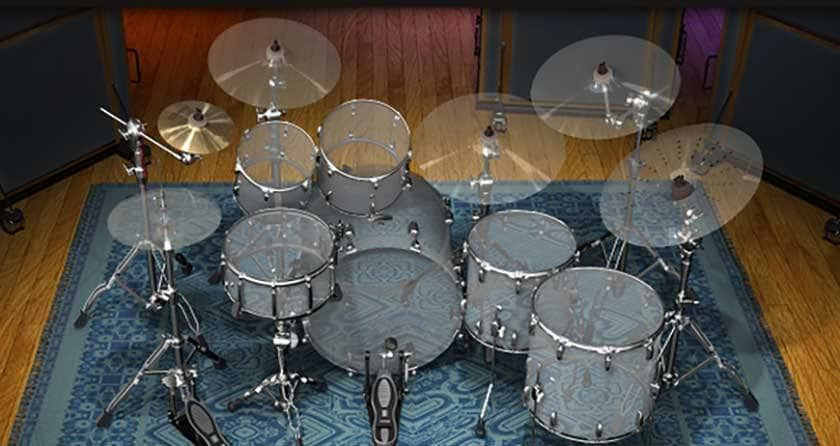
G3 Splash Cymbal
China Cymbal (Common)
This is a Chinese cymbal. The periphery of the cymbal is warped and has a unique overtone structure, giving it a distinctive, habitual Chinese sound. They tend to be used in hard music because of their quick sound rise. Along with Turkey, China is the birthplace of cymbals. Although not found in GM, there is a very large cymbal-like instrument called a gong (dongluo, tam-tam), which produces the most typical Chinese sound, “gowang.
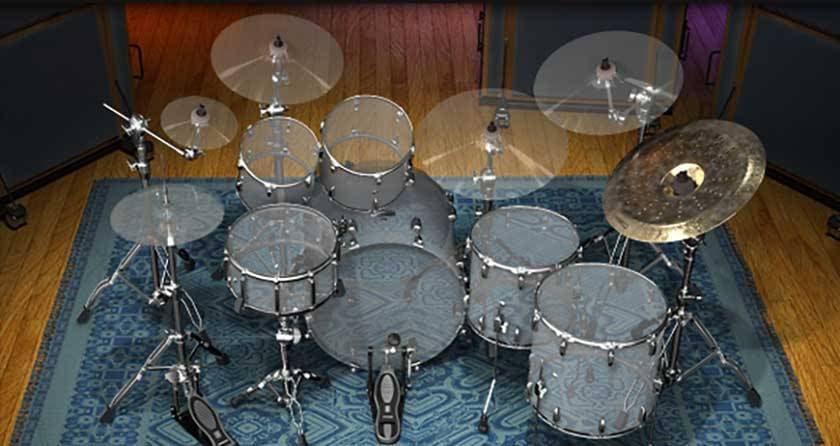
E3 China Cymbal
Ride Cymbal (common)
Ride cymbals are thicker and larger than other cymbals, measuring 18 to 24 inches. Mainly used for rhythm. It is an important cymbal that can be found in even the simplest drum set. It is indispensable especially for jazz.
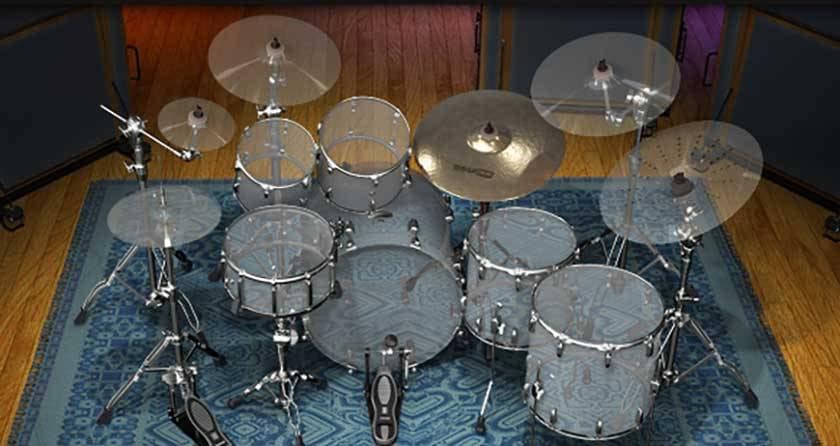
D#3 Ride Cymbal1
Low sound.
B3 Ride Cymbal2
Higher sound. Combined with a low ride cymbal, it creates a groove.
F3 Ride Bell
This is the sound produced by striking the bulge in the center of the ride cymbal with the head of the stick.
The “sound & person” column is made up of contributions from our readers.
For more information about submissions, click here.












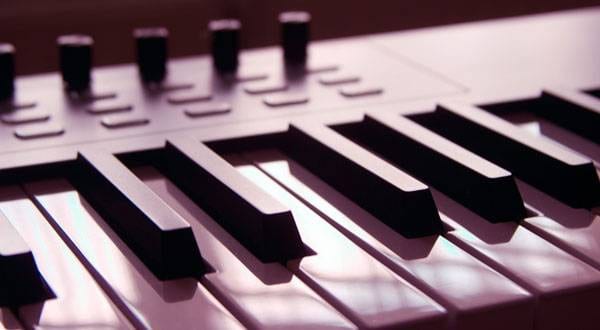
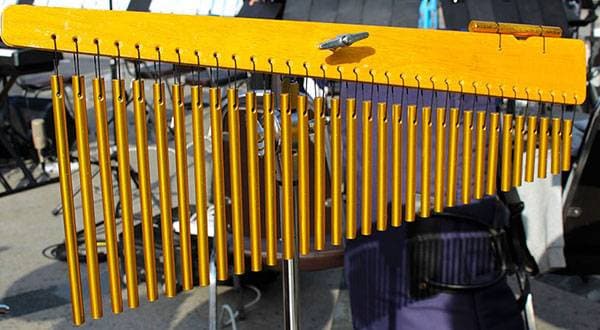

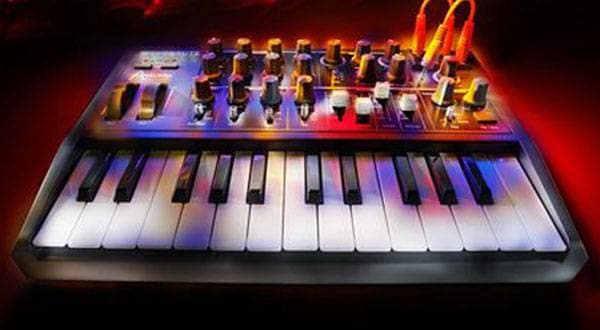
![[2023] Recommended Items for Music Programming - DAW/Software Instruments/Plug-ins](/contents/uploads/thumbs/2/2020/11/20201102_2_11495_1.jpg)
 iZotopeが手がけるオールインワンDAW “Spire”
iZotopeが手がけるオールインワンDAW “Spire”
 DTMセール情報まとめ
DTMセール情報まとめ
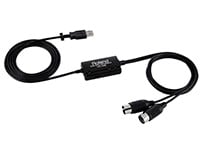 USB接続MIDIインターフェイス
USB接続MIDIインターフェイス
 USB接続対応のMIDIキーボード
USB接続対応のMIDIキーボード
 DTMに必要な機材
DTMに必要な機材
 DTM・DAW購入ガイド
DTM・DAW購入ガイド















